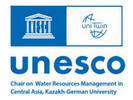



Year: 2024
Collections: Scientific Publications
Topics: Climate
Authors: Nina Miholjcic-Ivkovic
Countries: Kazakhstan, Kyrgyzstan, Uzbekistan, Tajikistan, Turkmenistan
Source: Central Asian Journal of Sustainability and Climate Research
Central Asia is considered a region highly vulnerable to climate change impact and susceptible to climate-induced migration. Rural populations throughout the region are particularly at risk of experiencing adverse effects of climate variability and (im)mobility due to increased exposure to environmental hazards and distress that can severely affect agricultural productivity. This paper explores how climate change impacts migration trends in rural areas of Central Asia with an aim to contribute to the research on climate mobility in the region focusing on most vulnerable inhabitants. By examining the ongoing region's environmental degradation with increased aridity and retreating glaciers that affect local agriculture, water and food security, this paper suggests possible outcomes of such effects on rural mobility trends across five Central Asian countries.
Year: 2024
Collections: Scientific Publications
Topics: Climate, Energy
Authors: Sergey Vassilyev, Galym Iskakov
Countries: Kazakhstan
Source: Central Asian Journal of Sustainability and Climate Research
The study aimed to evaluate the economic and financial viability of a coal mine methane (CMM) utilization project in Central Kazakhstan, demonstrating a methodology for similar initiatives. The analysis was based on the 2013 project proposed by the US Environmen-tal Protection Agency (EPA) that intended to capture methane emissions from six coal mines for electricity generation, yet was never implemented. The study’s relevance stems from Kazakhstan's 2030 methane pledge, recent progress in the country's climate change-related policy, mineworker mortality in 2023, and the shift of mines ownership. Building upon the technical specifications of the 2013 US EPA project, this research em-ployed standard financial and economic cost-benefit analysis (CBA). The financial model utilized a traditional discounted free cash flow approach, while the economic model in-corporated additional factors like the value of statistical life (VSL), shadow pricing, as well as benefits associated with mitigating ozone health impacts, crop damage, mine ex-plosion risks, and CO2 emissions. The economic model has indicated a positive net pre-sent value of $243 mln and 42% internal rate of return. The financial analysis also sug-gests potential profitability under fair electricity and carbon pricing market conditions. To assess project robustness under varying economic and financial assumptions, the study included a sensitivity analysis. The research has likewise leveraged prior CMM-related studies in Kazakhstan and provides valuable guidance for analyzing similar projects. In addition, it also highlights the need for certain adjustments in the current legislation to incentivize such projects, as well as to promote environmental sustainability and social development by mitigating methane emissions, which aligns with Kazakhstan's climate goals.
Year: 2024
Collections: Video
Topics: Water, Climate
Authors:
Countries: Kazakhstan, Uzbekistan
Source:
Year: 2024
Collections: Scientific Publications
Topics: Water, Climate
Authors: Aidar Zhumabaev, Hannah Schwedhelm, Beatrice Marti, Silvan Ragettli, Tobias Siegfried
Countries: Kazakhstan
Source: https://water-ca.org
The Badam River, a tributary to the Arys River located in the Syr Darya basin, is a crucial natural resource for ecological, social, and economic activities in the semi-arid region of southern Kazakhstan. The river basin is heavily influenced by manmade water infrastructure and faces water scarcity, particularly during summer, highlighting the importance of understanding its hydrological processes for effective water resource management. In this study, a semi-distributed conceptual hydrological model of the Badam River was implemented using the RS MINERVE hydrological software to evaluate the impacts of climate change on hydrology and to test the resilience of the water system. Connected HBV models were implemented for each of the hydrological response units that were defined as altitudinal zones. The hydrological model was calibrated using daily time steps between 1979 and 2011, and the resulting flow exceedance curves and hydrographs were used to assess the potential impacts of climate change on the basin, using CMIP6 precipitation and temperature scenarios. Future climate scenarios for the 2054 – 2064 period demonstrate that the peak discharge will be shifted to spring/late spring compared to the current early summer with no significant decrease in average discharge per day of the year. The insights gained from this hydrological-hydraulic model can be used to effectively manage the water system and inform future hydropower design decisions and serve as a blueprint for similar studies in the region and elsewhere.
Year: 2024
Collections: Scientific Publications
Topics: Water, Climate, Agriculture
Authors: Nazar Nurzoda
Countries: Tajikistan
Source: https://water-ca.org/
This study aimed to examine the efficiency of different drip irrigation regimes in spring film greenhouses for early tomato harvesting. The field (small-plot) experiment included designing and testing the watering technology suitable for rural Tajikistan. Irrigation, soil moisture, and tomato growth were followed for several seasons under four irrigation pilots. The experiments showed that the most effective drip irrigation regime for Elpida hybrid tomato was carrying it out while regulating soil moisture within 75-85%, with the irrigation demand of 4,978 m3/ha and irrigation norm of 99.0 m3/ha, also contributing to better water efficiency. The volume of irrigation water for the production of one unit of tomato crop in the second experiment was 5.73 m3/ha, i.e. 14.18% less than in the control plot. The study showed that the tomato evapotranspiration coefficient tends to increase as the threshold of soil mois-ture before and after irrigation grows. The maximum net yield amounted to 1,342 thou. Somoni/ha – 1.9 times or 52.7% higher compared to the control plot. The research findings can guide individual farmers and production facilities, as well as the overall development of agrarian economies like Tajikistan.
For questions about cooperation, please contact us at: